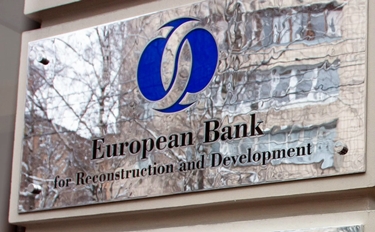The countries of Central Asia and the South Caucasus have made impressive progress in developing trade through the intermediary trade of goods from Western countries to Russia. After the introduction of sanctions, the EU’s trade turnover with Russia’s eastern neighbors increased many times, as did their trade with Russia. Trade turnover within the EAEU increased by 40%in 2022.
In addition, Central Asian and Caucasian countries have replenished their own budgets through the influx of labor, capital, and remittances, as well as the sale of their own oil and gas, demand for which has soared after a sharp decline in gas supplies to the EU from Russia.
In 2022, the export of Finnish goods to Central Asia grew to a huge size. In Kyrgyzstan, this figure has increased by more than 800%.The greatest positive dynamics of this indicator was observed in the second half of last year, when supply chains managed to react.
According to the report of the European Bank for Reconstruction and Development (EBRD) “Eurasian Circularity: Trade flows to Russia via the Caucasus and Central Asia, published in February, exports of the European Union and the UK to Armenia, Kyrgyzstan and Kazakhstan increased by 15-90% in 2022, depending on the product.
As also noted, this coincided with sanctions, which resulted in Western exports to Russia falling by 50%, meaning that the two figures are linked.
The divergence between flows to Russia and its southern neighbors continues to increase. “With many Western companies leaving the Russian market and Russian ports under sanctions, the economies of Central Asian countries are showing significant progress in trade with Russia and China, both through the export of their own products, such as textiles and consumer electronics, and through transport and re — export services,” the report says.
While Kazakhstan and Turkmenistan generate unprecedented revenues from oil and gas, Kyrgyzstan, Tajikistan, and Uzbekistan benefit from significant increases in labor, capital, and remittances. For example, the volume of individual financial transfers to Kyrgyzstan in 2022 reached a record high of 2.7 billion US dollars.
The intermediary trade of Central Asia and the South Caucasus with Russia, although it does not bring them significant profits, is nevertheless a significant source of cash flows for them, and the supply volumes themselves keep margins at a low level. Fashion and other products, such as iPhones, etc., are still readily available in Russia with an average mark-up of just 5% above 2021 prices.
Kyrgyzstan, with an annual GDP of US $ 9.75 billion, earned US $ 411.5 billion from intermediary trade with Russia last year, while Armenia, with a GDP of US $ 19.5 billion, earned US $ 1.17 billion. While this figure can be expected to grow, some products will have built-in redundancy, as domestic alternatives will also begin to enter the market and displace imported products, although highly valued Western brands will remain welcome.
Russia’s bilateral trade with Uzbekistan increased by 23% to $ 9.3 billion, including exports of textiles and agricultural products to Russia. Timber exports from Kazakhstan to the European Union have increased 74-fold, and from Kyrgyzstan almost 18,000-fold, as EU buyers look for Russian alternatives. But things may not always be what they seem. There are almost no wood reserves in Kazakhstan and Kyrgyzstan, which means that the wood sold in the EU is of Russian origin.
Western governments have expressed outrage that Russia is “circumventing sanctions” with the help of countries in Central Asia and the South Caucasus. However, it is EU buyers who are desperately looking for substitute products. No source of wood – no new housing or furniture buildings.
This did not stop the US Department of Justice, which decided to bring in 25 more prosecutors to search for loopholes through which Russia “circumvents sanctions and export controls”, and US officials began working in the counterintelligence and export control department. They will be tasked with monitoring organizations that help Russia circumvent sanctions. If necessary, the prosecutor’s office will be able to initiate criminal proceedings against companies that violate the law.
Whether these companies will be the original Russian suppliers, intermediaries in Central Asia, or European buyers remains to be seen, as will any political consequences caused by the US imposing sanctions on countries far beyond their geographical scope. Meanwhile, it goes without saying that in the case of wood, the United States and Canada want to increase their own wood exports and sell it to Europe.The search for goods by EU buyers can really become very difficult when they are trying to cope with selling prices in North America and trying to find cheaper alternatives. ///Russia Briefing, 21 March 2023
Originally published at https://www.russia-briefing.com/news/ebrd-report-anti-russian-sanctions-are-boosting-central-asian-economies.html/
